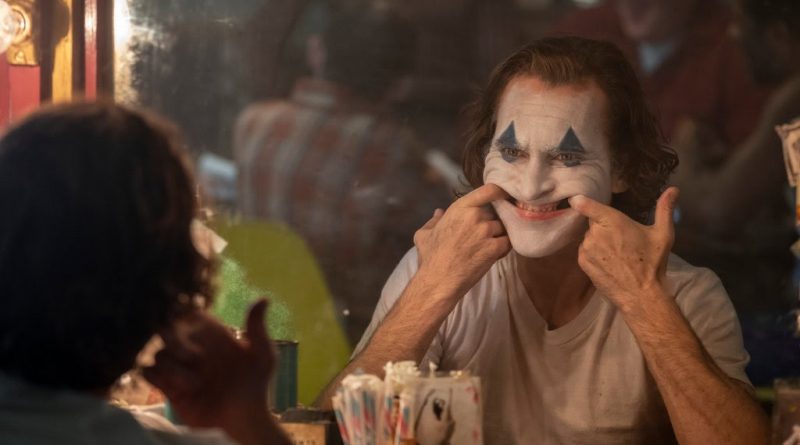The biggest disappointment of the year has come. It emerges with a strangely adult importance of tulip fever from the festival’s awards season as an exclusive turn in an established pop culture brand. Last year we had the solemn version of Suspiria by Luca Guadagnino, and now it’s Joker, from director and co-writer e: a new origin myth for Batman’s most famous supervillain opponent.
Joaquin Phoenix plays Arthur Fleck, a pathetic loser and loner in Gotham City, in the early 1980s. Arthur is a former patient hospitalized in a psychiatric facility, but is now allowed to live with his elderly mother, Penny (Frances Conroy ), in his dull apartment. Poor Arthur has a neurological condition that means he is likely to laugh out loud at inopportune moments. He is in love with his neighbor Sophie (Zazie Beetz) and is eager to be a cheesy comedian and TV host and hero worshiper Murray Franklin (Robert De Niro) But he can only get a job as a clown with smiling makeup and loose shoes that spin a banner outside a store, where he is harassed and beaten by young thugs who pass by. One day, Phillips directed a film that features a bright funny and fun figure with learning difficulties: Alan in The Hangover, played by Zach Galifianakis, that strange dysfunctional figure that mispronounces the noun “retarded”. I wonder what Joker would look like with Galifianakis in the lead. Well, the Phoenix casting indicates more clearly how sexy Joker is supposed to be.
There is a great production design by Mark Friedberg, some tremendous images of urban landscapes by cinematographer Lawrence Sher, and a great performance by Phoenix, although it is not the best, it is not as good as its appearance in The Master by Paul Thomas Anderson . The film keeps your attention to the terrible vengeance bath Joker on the subway from the beginning, perhaps with the intention to echo the famous gunfight of Bernhard Goetz of 1984, although Phillips makes it prudently a non-racist attack. After this, the film loses its interest, with tedious and forced material on Joker’s supposed trigger of an anti-capitalist and anti-rich movement with protesters disguised as clowns. Joker’s own criminal and serial killer career is amazingly dazzled.
The movie refers to drama-era movies, such as Death Wish movies, The French Connection and even Star Wars, but it is more obvious a laborious and useless tribute to the Scorsese / De Niro classic The King of Comedy with a bit from Taxi Driver, which means that at various times he is a bit like the king of comedy and the taxi driver, only not so good.
The connection is marked by the distribution of De Niro himself, but nevertheless it is useless and pedantic, especially in comparison with You Were Never Really Here by Lynne Ramsey, also starring Phoenix as a loner who lives with his mother, which achieved the connection more skillfully.
The whole idea of the evil clown should be very relevant. We live in an era of trolling, incels and bullying on the internet (The creepy Milo Yiannopoulos described himself as a “supervillain” in his now canceled Twitter biography). There is nothing wrong and everything is fine in getting involved with all this, and the “impersonator” row is a false clue. But, perhaps because online aggression is difficult to dramatize, Phillips understandably wanted his film to unfold in an era before the web. However, he deceives an almost quasi-YouTube anachronistic moment in his story when somehow a video of Arthur’s catastrophic attempt at standing comedy arises (I wonder if there was no previous draft of the contemporary script).
The genesis of this Joker is decidedly mature and not very cartoonish, compared to, say, the low-level thief Jack Napier of Jack Nicholson who falls into a chemical tank in Bat Buman by Tim Burton, making him the Joker with white skin, green hair and a smile rictus (The appearance of the DC Joker was originally inspired by Conrad Veidt in the 1928 silent classic The Man Who Laughs, a man whose face was disfigured in a smile by his father’s political enemies).
There is no reason why the Phoenix Joker, elaborated in the past, is not as powerful as the mysterious, without motives and without origin of Joker Ledger in The Dark Knight. But at some point he must enter the world of supervillaindom comics, and Ledger was more powerful because he was not overwhelmed with all these realistic details and exaggerated ironic grandeur, and was not forced to take a full story on his own. This Joker has only one act in him: the first act. The film somehow manages to be desperately serious and very superficial.

COMMENTS